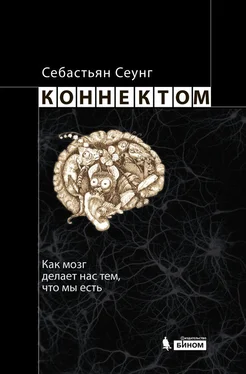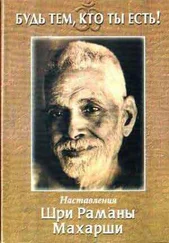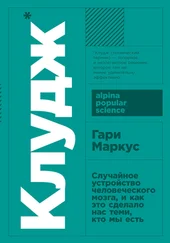105. Fields, R. D. 2009. The other brain . New York: Simon & Schuster.
106. Fiete, I. R., W. Senn, C. Z. H. Wang, and R. H. R. Hahnloser. 2010. Spike-time-dependent plasticity and heterosynaptic competition organize networks to produce long scale-free sequences of neural activity. Neuron, 65 (4): 563–576.
107. Finger, S. 2005. Minds behind the brain: A history of the pion eers and their discoveries . New York: Oxford University Press.
108. Finger, S., and M. P. Hustwit. 2003. Five early accounts of phantom limb in context: Pare, Descartes, Lemos, Bell, and Mit chell. Neurosurgery , 52 (3): 675.
109. Flatt, A. E. 2005. Webbed fingers. Proceedings ( Baylor Univ ersity Medical Center ), 18 (1): 26.
110. Flechsig, P. 1901. Developmental (myelogenetic) localisation of the cerebral cortex in the human subject. Lancet , 158 (4077): 1027–1030.
111. Fombonne, E. 2009. Epidemiology of pervasive developmental disorders. Pediatric Research , 65 (6): 591–598.
112. Ford, B. J. 1985. Single lens: The story of the simple microscope. New York: Harper & Row.
113. Friederici, A. D. 2009. Pathways to language: Fiber tracts in the human brain. Trends in Cognitive Sciences , 13 (4): 175–181.
114. Friston, K. J. 1998. The disconnection hypothesis. Schizo phrenia Research , 30 (2): 115–125.
115. Frith, U. 1993. Autism. Scientific American, 268 (6): 108–114.
116. Frith, U. 2008. Autism: A very short introduction. New York: Oxford University Press.
117. Frost, D. O., D. Boire, G. Gingras, and M. Ptito. 2000. Surgically created neural pathways mediate visual pattern discrimination. Proceedings of the National Academy of Sciences , 97 (20): 11068.
118. Fukuchi-Shimogori, T., and E. A. Grove. 2001. Neocortex patter ning by the secreted signaling molecule FGF8. Science , 294 (5544): 1071.
119. Fukunaga, T., M. Miyatani, M. Tachi, M. Kouzaki, Y. Kawaka mi, and H. Kanehisa. 2001. Muscle volume is a major de terminant of joint torque in humans. Acta Physiologica Scand inavica , 172 (4): 249–255.
120. Gall, F. J. 1835. On the functions of the brain and of each of its parts: With observations on the possibility of determining the instincts, propensities, and talents, or the moral and intellectual dispositions of men and animals, by the configuration of the brain and head. Trans. W. Lewis. Boston: Marsh, Capen & Lyon.
121. Galton, F. 1889. On head growth in students at the University of Cambridge. Journal of Anthropological Institute of Great Britain and Ireland , 18: 155–156.
122. Galton, F. 1908. Memories of my life. London: Methuen.
123. Gaser, C., and G. Schlaug. 2003. Brain structures differ between musicians and non-musicians. Journal of Neuroscience , 23 (27): 9240.
124. Gelbard-Sagiv, H., R. Mukamel, M. Harel, R. Malach, and I. Fried. 2008. Internally generated reactivation of single neurons in human hippocampus during free recall. Science , 322 (5898): 96.
125. Geschwind, D. H., and P. Levitt. 2007. Autism spectrum disorders: Developmental disconnection syndromes. Current Opinion in Neurobiology , 17 (1): 103–111.
126. Geschwind, N. 1965a. Disconnexion syndromes in animals and man, i. Brain , 88 (2): 237–294.
127. Geschwind, N. 1965b. Disconnexion syndromes in animals and man, ii. Brain , 88 (3): 585–644.
128. Gilbert, M., R. Busund, A. Skagseth, P. Å. Nilsen, and J. P. Solbø. 2000. Resuscitation from accidental hypothermia of 137 °C with circulatory arrest. Lancet , 355 (9201): 375–376.
129. Glahn, D. C., J. D. Ragland, A. Abramoff, J. Barrett, A. R. Laird, C. E. Bearden, and D. I. Velligan. 2005. Beyond hypof rontality: A quantitative meta-analysis of functional neuroimaging studies of working memory in schizophrenia. Human Brain Mapping , 25 (1): 60–69.
130. Gould, E., A. J. Reeves, M. S. A. Graziano, and C. G. Gross. 1999. Neurogenesis in the neocortex of adult primates. Science , 286 (5439): 548–552.
131. Greenough, W. T., J. E. Black, and C. S. Wallace. 1987. Experience and brain development. Child Development , 58 (3): 539–559.
132. Gross, C. G. 2000. Neurogenesis in the adult brain: Death of a dogma. Nature Reviews Neuroscience , 1 (1): 67–73.
133. Gross, C. G. 2002. Genealogy of the “grandmother cell”. Neuroscientist , 8 (5): 512.
134. Guerrini, R., and E. Parrini. 2010. Neuronal migration disorders. Neurobiology of Disease , 38 (2): 154–166.
135. Guillery, R. W. 2005. Observations of synaptic structures: Origins of the neuron doctrine and its current status. Philo so phical Transactions B , 360 (1458): 1281.
136. Hahnloser, R. H. R., A. A. Kozhevnikov, and M. S. Fee. 2002. An ultra-sparse code underlies the generation of neural seq uences in a songbird. Nature , 419 (6902): 65–70.
137. Hajszan, T., N. J. MacLusky, and C. Leranth. 2005. Short-term treatment with the antidepressant fluoxetine trigg ers pyramidal dendritic spine synapse formation in rat hippo cam pus. European Journal of Neuroscience , 21 (5): 1299–1303.
138. Hall, D. H., and Z. F. Altun. 2008. C. elegans atlas. Cold Spring Harbor, N.Y.: Cold Spring Harbor Laboratory Press.
139. Hall, D. H., and R. L. Russell. 1991. The posterior nervous system of the nematode Caenorhabditis elegans : Serial rec onstruct ion of identified neurons and complete pattern of synaptic interactions. Journal of Neuroscience , 11 (1): 1.
140. Hallmayer, J., S. Cleveland, A. Torres, J. Phillips, B. Cohen, T. Torigoe, J. Miller, A. Fedele, J. Collins, K. Smith, et al. 2011. Genetic heritability and shared environmental factors among twin pairs with autism. Archives of General Psychiatry. doi: 10.1001/archgenpsychiatry.2011.76
141. Harris, J. C. 2003. Pinel orders the chains removed from the insane at Bicêtre. Archives of General Psychiatry , 60 (5): 442.
142. Häusser, M., N. Spruston, and G. J. Stuart. 2000. Diversity and dynamics of dendritic signaling. Science , 290 (5492): 739.
143. He, H. Y., W. Hodos, and E. M. Quinlan. 2006. Visual de privation reactivates rapid ocular dominance plasticity in adult visual cortex. Journal of Neuroscience, 26 (11): 2951–2955.
144. Hebb, D. O. 1949. The organization of behavior: A neuropsychological theory . New York: Wiley.
145. Hell, S. W. 2007. Far-field optical nanoscopy. Science , 316 (5828): 1153–1158.
146. Helmstaedter, M., K. L. Briggman, and W. Denk. 2008. 3D structural imaging of the brain with photons and electrons. Current Opinion in Neurobiology, 18 (6): 633–641.
147. Helmstaedter, M., K. L. Briggman, and W. Denk. High-accuracy neurite reconstruction for high-throughput neuroanatomy. Nature Neuroscience , 14 (8): 1081–1088.
148. Hickok, G., and D. Poeppel. 2007. The cortical organization of speech processing. Nature Reviews Neuroscience , 8 (5): 393–402.
149. Hopfield, J. J. 1982. Neural networks and physical systems with emergent collective computational abilities. Proceedings of the National Academy of Sciences , 79 (8): 2554.
150. Hopfield, J. J., and D. W. Tank. 1986. Computing with neural circuits: A model. Science , 233 (4764): 625.
151. Howland, D. 1996. Borders of Chinese civilization: Geography and history at empire’s end . Durham, N. C.: Duke University Press.
152. Hutchinson, S., L. H. L. Lee, N. Gaab, and G. Schlaug. 2003. Cerebellar volume of musicians. Cerebral Cortex , 13 (9): 943.
153. Huttenlocher, P. R. 1990. Morphometric study of human cerebral cortex development. Neuropsychologia , 28 (6): 517.
Читать дальше
Конец ознакомительного отрывка
Купить книгу




![Рейчел Херц - Почему мы едим то, что едим [Наука о том, как наш мозг диктует нам, что есть]](/books/390411/rejchel-herc-pochemu-my-edim-to-chto-edim-nauka-o-t-thumb.webp)
![Алан Джасанов - Мозг - прошлое и будущее [Что делает нас теми, кто мы есть]](/books/401119/alan-dzhasanov-mozg-proshloe-i-buduchee-chto-delaet-thumb.webp)






